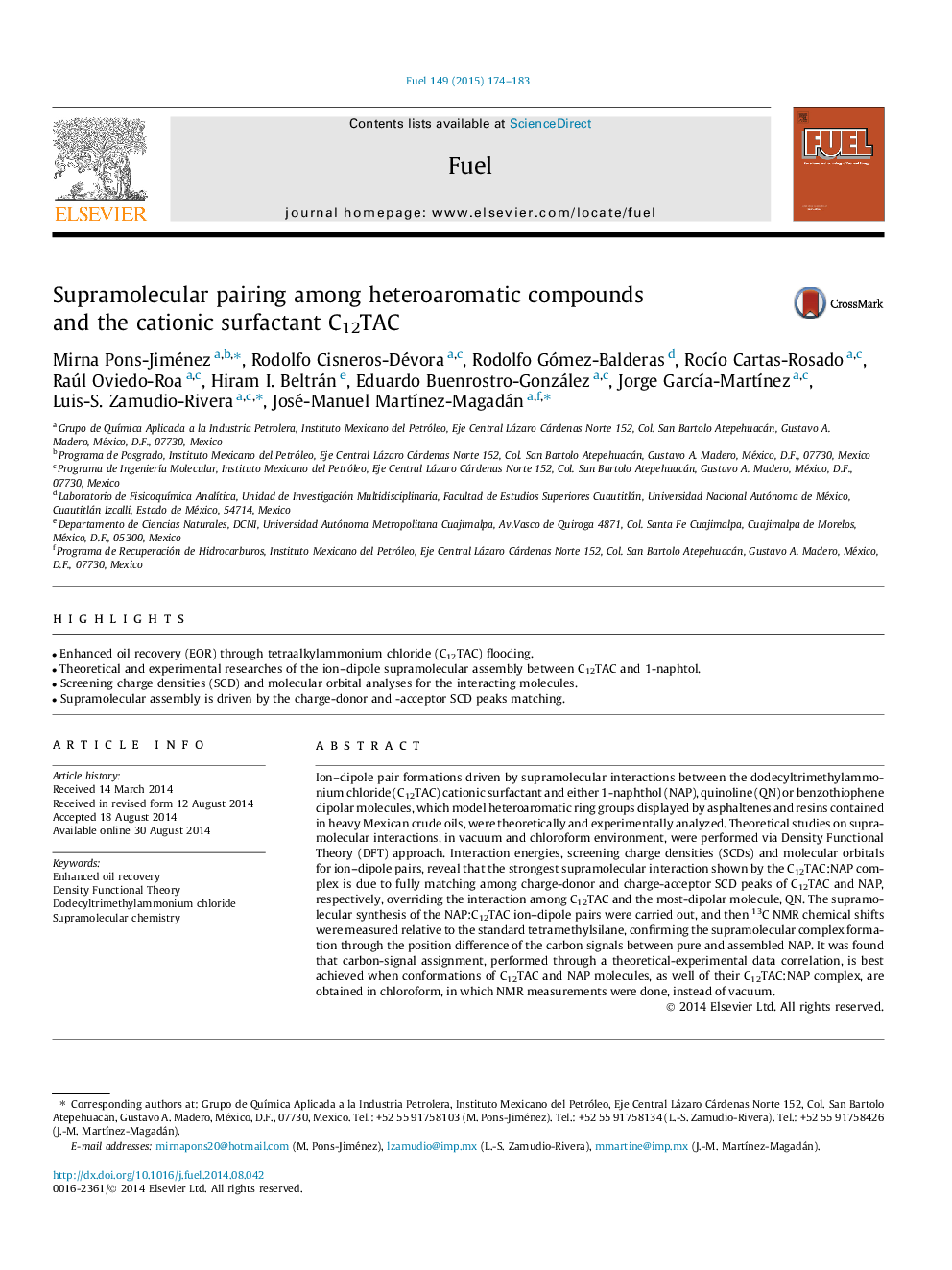| Article ID | Journal | Published Year | Pages | File Type |
|---|---|---|---|---|
| 205785 | Fuel | 2015 | 10 Pages |
•Enhanced oil recovery (EOR) through tetraalkylammonium chloride (C12TAC) flooding.•Theoretical and experimental researches of the ion–dipole supramolecular assembly between C12TAC and 1-naphtol.•Screening charge densities (SCD) and molecular orbital analyses for the interacting molecules.•Supramolecular assembly is driven by the charge-donor and -acceptor SCD peaks matching.
Ion–dipole pair formations driven by supramolecular interactions between the dodecyltrimethylammonium chloride (C12TAC) cationic surfactant and either 1-naphthol (NAP), quinoline (QN) or benzothiophene dipolar molecules, which model heteroaromatic ring groups displayed by asphaltenes and resins contained in heavy Mexican crude oils, were theoretically and experimentally analyzed. Theoretical studies on supramolecular interactions, in vacuum and chloroform environment, were performed via Density Functional Theory (DFT) approach. Interaction energies, screening charge densities (SCDs) and molecular orbitals for ion–dipole pairs, reveal that the strongest supramolecular interaction shown by the C12TAC:NAP complex is due to fully matching among charge-donor and charge-acceptor SCD peaks of C12TAC and NAP, respectively, overriding the interaction among C12TAC and the most-dipolar molecule, QN. The supramolecular synthesis of the NAP:C12TAC ion–dipole pairs were carried out, and then 13C NMR chemical shifts were measured relative to the standard tetramethylsilane, confirming the supramolecular complex formation through the position difference of the carbon signals between pure and assembled NAP. It was found that carbon-signal assignment, performed through a theoretical-experimental data correlation, is best achieved when conformations of C12TAC and NAP molecules, as well of their C12TAC:NAP complex, are obtained in chloroform, in which NMR measurements were done, instead of vacuum.
